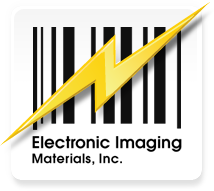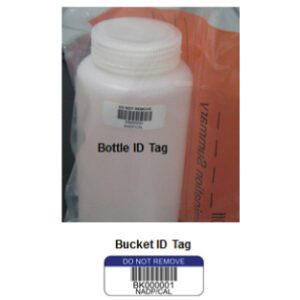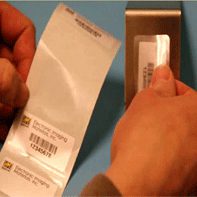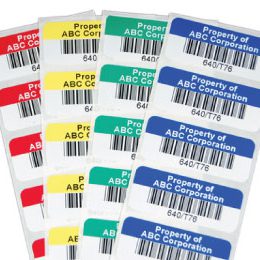You’re in a high-volume diagnostic lab, humming with the promise of life-changing test results. You’re armed with advanced Hologic® systems (like the ThinPrep® 5000 and Panther Fusion® Systems) designed to streamline women’s health diagnostics and beyond. But there’s a hidden snag that can derail your operation: inadequate labels. When your lab invests in powerful, automated technology, the last thing you need is a mislabeled specimen jamming up the works.
This scenario is all too common, and it highlights the significance of lab label selection in maintaining efficiency, safety, and compliance. In this article, we’ll walk you through critical insights labs should consider before picking labels for Hologic equipment.

Why Specialized Labels Matter in Laboratories
Let’s start with the basics. Not all medical labels are cut from the same cloth—especially when it comes to sophisticated machinery like Hologic’s high-throughput systems. Generic labels may suffice for routine tasks, but Hologic equipment operates under demanding conditions: repeated scanning, mechanical handling, heat exposure, chemical contact, and more. If your labels can’t handle these stressors, you’ll find yourself dealing with frustrating downtime and potential compliance risks.

Machine Compatibility
Hologic systems are designed to read barcodes accurately, track multiple sample sets at the same time, and accelerate routine procedures. A misaligned label can warp under friction or peel at the edges, leading to feed errors or unreadable barcodes. Suddenly, your state-of-the-art device is at a standstill, and your staff must relabel or rerun tests—an expensive and time-consuming inconvenience.

Regulatory Expectations
Laboratories manage sensitive patient data and biological specimens. This means your labeling must comply with industry regulations, from HIPAA privacy requirements to FDA guidelines for diagnostic equipment. If a label fails and a sample gets misplaced or mislabeled, you risk compliance nightmares. Prioritizing lab label selection that meets Hologic’s technical specifications prepares your lab for smooth audits and safe data handling.
The Fundamentals of Medical Labels for Hologic Equipment
Labels used with Hologic systems must meet strict performance standards to ensure accurate scanning, reliable adhesion, and compatibility with demanding lab conditions.
Print Durability
Your labels should maintain crisp, clear text and barcodes even after repeated scans and potential exposure to chemicals or heat. Labs often use label solutions featuring thermal transfer printing for maximum durability. Unlike direct thermal printing, thermal transfer images resist fading and smudging more effectively—an essential factor in labs where a single misread barcode can wreak havoc.
Adhesive Selection
In a busy diagnostic environment, labels can go through multiple handling stages. If your adhesive fails in the middle of a crucial test, your entire workflow can stall. The best adhesives for Hologic systems:
- Stand Up to High Heat: Some processes involve elevated temperatures or prolonged contact with warm surfaces.
- Resist Chemicals: Alcohol, disinfectants, and cleaning agents can degrade the adhesive if it’s not specially formulated.
- Won’t Leave Residue: You don’t want leftover sticky residue on your expensive Hologic equipment if a label has to be removed or replaced.
Material Resistance
Some labs deal with humidity, cryogenic storage, or consistent exposure to harsh reagents. Selecting the wrong facestock can result in curl, peel, or compromised barcode readability. Look for synthetic materials—like polypropylene or polyester—that handle moisture better than paper labels. The more demanding your environment, the more you should invest in specialized materials tailored for medical labels in high-performance settings.
Machine Compatibility
Hologic systems rely on specific alignment of labels and barcodes to operate at peak efficiency. Even a minor deviation in label dimensions can cause mechanical jams or misreads. Reputable suppliers provide detailed specs on how their labels align with Hologic’s scanning technology, ensuring each label is read correctly.

Common Pitfalls and How to Avoid Them
Even with the best equipment in place, labeling missteps can quietly undermine your lab’s efficiency, accuracy, and compliance. Here are three common pitfalls labs face when selecting labels for Hologic systems—and how to stay ahead of them.
Pitfall 1: Relying on Generic Labels
Trap: It’s easy to assume all labels are interchangeable, especially when you’re trying to manage costs. Generic labels may offer lower upfront pricing, but at the expense of performance and reliability.
Consequence: Without labels specifically engineered for Hologic systems, you’re likely to face high error rates, misreads, barcode scanning failures, and label peeling during processing. Over time, these issues force your team into constant re-labeling and re-testing, creating costly workflow interruptions.
Solution: Work with a supplier that specializes in Hologic-compatible labels and has gone through the full qualification process. Look for vendors that offer pre-tested or pre-approved label sets that align with Hologic specifications. This eliminates trial-and-error and ensures your labels won’t become a bottleneck.
Pitfall 2: Overlooking Regulatory Standards
Trap: Labeling might seem like a small piece of the puzzle, but it’s directly tied to regulatory compliance. Ignoring label performance under audit conditions or assuming “close enough” is good enough can land your lab in hot water.
Consequence: Misidentified or mislabeled specimens can trigger HIPAA violations, FDA scrutiny, or CLIA noncompliance—all of which can result in fines, failed inspections, or even revoked certifications.
Solution: Build compliance into your lab label selection process. That means using label materials, adhesives, and printing methods that meet or exceed FDA, HIPAA, and ISO 13485 requirements. A qualified label supplier should be able to walk you through how their solutions check every regulatory box.
Pitfall 3: Failing to Test Under Real Conditions
Trap: Labels might look good on spec sheets, but labs often make the mistake of assuming they’ll perform just as well in practice. Environmental variables like humidity, temperature shifts, handling pressure, or chemical contact can all degrade untested labels.
Consequence: Labels that looked great at first may peel, smear, or become unreadable during actual use. This leads to test delays, workflow bottlenecks, or even lost samples.
Solution: Always run a real-world pilot before rolling out new labels. Apply test labels to the actual containers you use, expose them to the same solvents and sterilization processes, and scan them with your Hologic instruments. If they hold up after 24-48 hours of true-to-life conditions, you’ll know they’re worth the investment.
If you’re unsure where to start with labels for your Hologic system, Electronic Imaging Materials can help you evaluate how your current labels perform.
Choosing a Qualified Label Supplier
When labels are responsible for maintaining traceability, supporting compliance, and keeping high-throughput systems running without interruption, choosing a supplier who understands the nuances of Hologic machines makes all the difference.
What It Means to Be “Hologic-Qualified”
Not every vendor that sells labels can claim official status for Hologic systems. Earning a “qualified” label supplier badge usually involves a rigorous approval process, including real-time lab testing and in-depth consultations with Hologic engineers. When a supplier has gone through these hoops, you know their product lines align with Hologic machines’ exacting requirements.
Customized to Your Workflow
Many labs need custom sizes, shapes, or sets for their Hologic-compatible labels, especially if multiple vials or test components must share a barcode. Medical labels can be tailored to your lab’s specific throughput demands, ensuring each sample is tracked accurately from the first scan to the final result.
Where Precision Meets Reliability
Electronic Imaging Materials (EIM), we know lab label selection can feel overwhelming, especially when you’re dealing with sophisticated equipment like Hologic systems. Here’s how we help you succeed:
- Expert Consultation: Our specialists dig into your lab’s workflow and environment, identifying the ideal adhesives, coatings, and layouts.
- Custom-Fit Solutions: Need a unique label set that syncs multiple sample components under one master ID? We’ve got you covered.
- Validated Performance: Our labels undergo rigorous testing to ensure scanning accuracy, chemical resistance, and compliance with industry standards.
Ready to skip the guesswork and protect your lab from downtime or labeling errors? We offer free label consultations tailored to your Hologic machine’s requirements. Because when it comes to lab labeling, the right choice is a game-changer.





